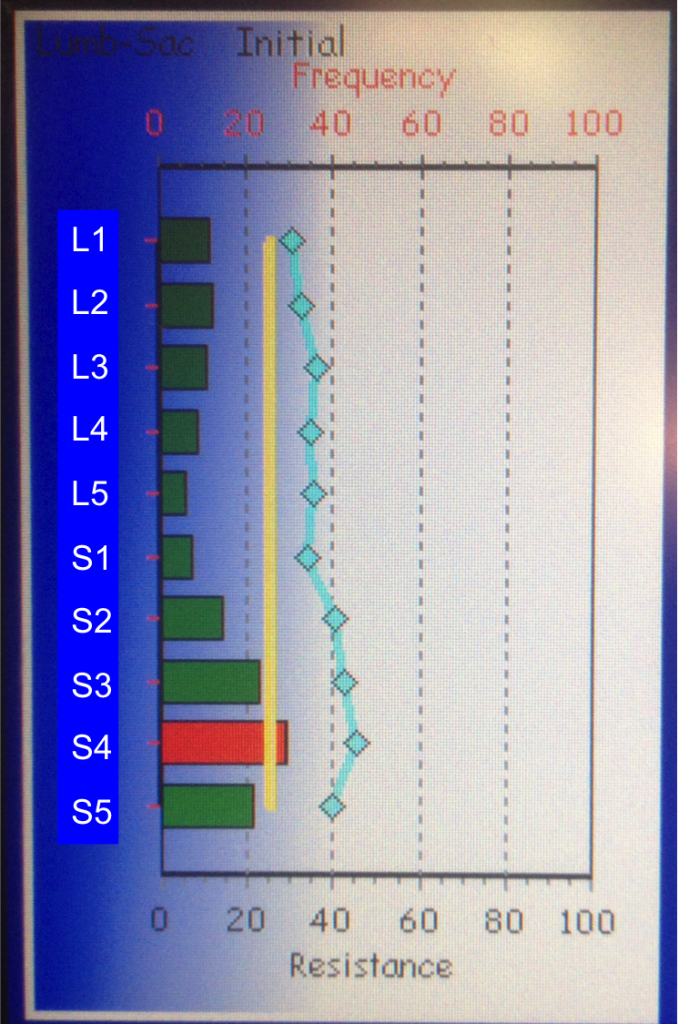
It has been about a month since my post with regard to my second lower back injury in the past year. It has been a LONG month and a lot has happened. There is good news and bad news. I wanted to share an update on my prognosis and recovery phase given all of the positive feedback I received on how sharing my story here has helped others with similar lower back challenges. Besides, it would be MUCH to easy to feel sorry for myself and shutdown mentally and physically. Learning more about the extent of my injury and how I can resume my active lifestyle ASAP has been a major source of motivation for my journey! So let’s pick up where we left off…
Several days after I shared my X-Rays and rehab gameplan I began to develop significant pain and numbness down the left side of my body including butt, leg, calf and foot. For those familiar with sciatic pain via personal experience, you know what I am talking about. Ouch!! Sciatic pain is no joke and in many cases is due to lower back issues like disc herniation or even common in pregnancy where the sciatic nerves are compressed by baby. My wife had sciatic pain during pregnancy and I recall that she was in a lot of pain. I can now tell you from my own experience that sciatica is VERY painful.
The new, radiating sciatic pain was a huge red flag that my lower back injury was more serious than detection in X-Rays or other previous doc assessments. In addition to the sciatic pain, it felt as though my body was getting more tense by the day and I even noticed my spine noticeably (very) crooked in the mirror, which I later learned is a natural form of self-compensation where the body attempts to move away from pain (don’t try to force it back!). In my case, my body was leaning away from the left side of my body where several issues were identified by X-Ray with reduced disc spacing in the back, disc degeneration and leg length mismatch.
I immediately signed up for an MRI scan that weekend to assess the damage. The scans were performed in the upright model of MRI machine and took about 40 minutes to complete. I received the results on CD that very day and didn’t need to wait until Monday for a professional to tell me what was wrong in a fancy report using words I can’t pronounce.
Given my science background and Ph.D. project that assessed liquid relaxation signals via MRI methodology, I had a sense that I would be able to determine any issues with hydration in the discs between vertebrae (importance to be discussed later). Also, a quick Google search produces many images of MRI scans of the lumbar region to diagnose lower back issues. So, a quick study of the MRI scan above showed numerous issues marked in green and a significant issue in yellow. I marked the scan with highlights (or lowlights). My assessment…
– Disc degeneration identified from X-Ray scans is confirmed throughout the spine. More than the typical 38 year old, but likely related to competitive sports over the years and length mismatch of legs.
– Disc space reduction evident, especially in lower spine
– Lack of hydration signal in several discs where you see black and no gray response signal. Hydration is important so that the disc can operate like a “shock absorber” and dampen impact on vertebrae. Hydrated discs are more brittle.
– Several disc bulges that push into spinal nerves running vertical to spine (bulges in green circles)
– One significant disc herniation that squeezes 11 mm into the spinal nerves (yellow circle)… OUCH, likely source of sciatic pain!
Here is the longer version using bigger words…
1. Moderate-sized, caudally extruded left lateralizing herniation at the moderately degenerated L4-5 displaces/compresses the traversing left L5 and mildly impinges upon the intrathecal left S1 root.
2. Central protrusion and bulge at L5-S1, with moderate disc degeneration and no stenosis or impingement.
3. Mild disc degeneration at T9-10, T10-11, L1-2 and L3-4, with bulge at T10-11, L1-2 and L3-4 and also laterally at L4-5, with mild right foraminal stenosis at L4-5.
4. No fracture, osseous neoplasm or infection and no intradural abnormality, including no cord/conus mass.
So that is the bad news. Now what?
Well, the smart move is to not get overly aggressive with rehab and let the body settle down from the trauma. That is what I decided to do over the coming weeks. With the guidance of several friends that are professionals familiar with the management of these types of injuries, my focus shifted to the following activities…
– Performed a comprehensive bio blood exam to assess overall blood chemistry and health of my body. This is important as many decisions we make everyday influence how our body can recover and function. I also found from my research that these factors can influence the ability of herniated discs to re-hydrate and pull back from the spinal nerves while re-gaining some “shock absorption” functionality. Blood work came back good overall, with some minor areas for improvement that will be addressed. There were shockingly high values for tests associated with iron levels including ferritin, serum iron, iron saturation, MCH, MCHC and UIBC. I seriously freaked out when I saw these numbers and did the wrong thing by searching Google for answers that seemed to indicate that I have hemochromatosis and need to give blood weekly and monthly for lifetime to keep levels manageable or risk death. Fortunately, all professionals came back and said that is likely not the case as any serious inflammation will elevate these pro-inflammatory markers, called Acute Phase Reactants, common with acute issues. Phew. I plan to re-test later this year after my body settles to assess normal steady state values.
– Leveraged a 10-day steroid pack to help control the inflammation (prednisone 20 mg, oral). Starts with a high dose for 4 days and lower dose for 6 days. I was skeptical at first as I did not see much response in the first few days, but I am a believer now that the steroid pack helped with inflammation, along with ice treatment. After the 10 days of steroid pack I felt MUCH better with less sciatic pain and more mobility in my lower back.
– The sciatic pain was significant enough I required some pain management intervention. I was prescribed 5-325 hydrocodone-acetaminophen (aka, Vicodin), 1 every 8 hours. Didn’t do much. Later had much better results with 10-325, 1-2 every 6-8 hours as needed. I was warned that the pain killers could lead to some constipation, however, I do not have a history of those issues so I was not overly concerned. Woah, I was wrong. In the interest of not sharing too many details, I had a severe issue with constipation that lasted 18 hours and was very painful, almost more painful than the lower back injury and certainly didn’t help recovery. Missed a night of sleep in the process. In the future, if I take pain killers like that I will be supplementing with a stool softener. Ugh.
– I also continued ice treatment, inversion table, light stretching and spine stabilization physical therapy. Nothing stressful on the spine with most of the focus on rest.
– Successfully integrated orthotics into my life to balance the length mismatch of my legs.
– Continued chiropractic care to gently move the bones in my spine back to where they should be. The manual adjustments were painful at first so we moved to more gentle, mechanical manipulation via Pro-Adjuster technology, which helped tremendously. Below is a scan of my lumbar-sacral region showing some serious mismatch in the vertebrae response with specific challenges in the L4, L5 and S1 locations, similar to X-Rays and MRI. Over time the frequency and resistance response for all vertebrae L1 through L5 will improve to similar, normal performance… I hope!
The good news?
I am on the right path. My spine is now upright and the sciatic pain has resided. I look normal again, not crooked, which is good since we are going to Cancun next week! My orthotics are working well and physical therapy and adjustments will continue to ramp. I wish I had the X-Rays and MRI last year when I first had the lower back injury. It was a time bomb waiting to go off. All the signs were there and it didn’t take much more than lifting my kids to re-injure and reveal 38 years of issues in my back. But, I’ll BE BACK (best Arnold voice!)


